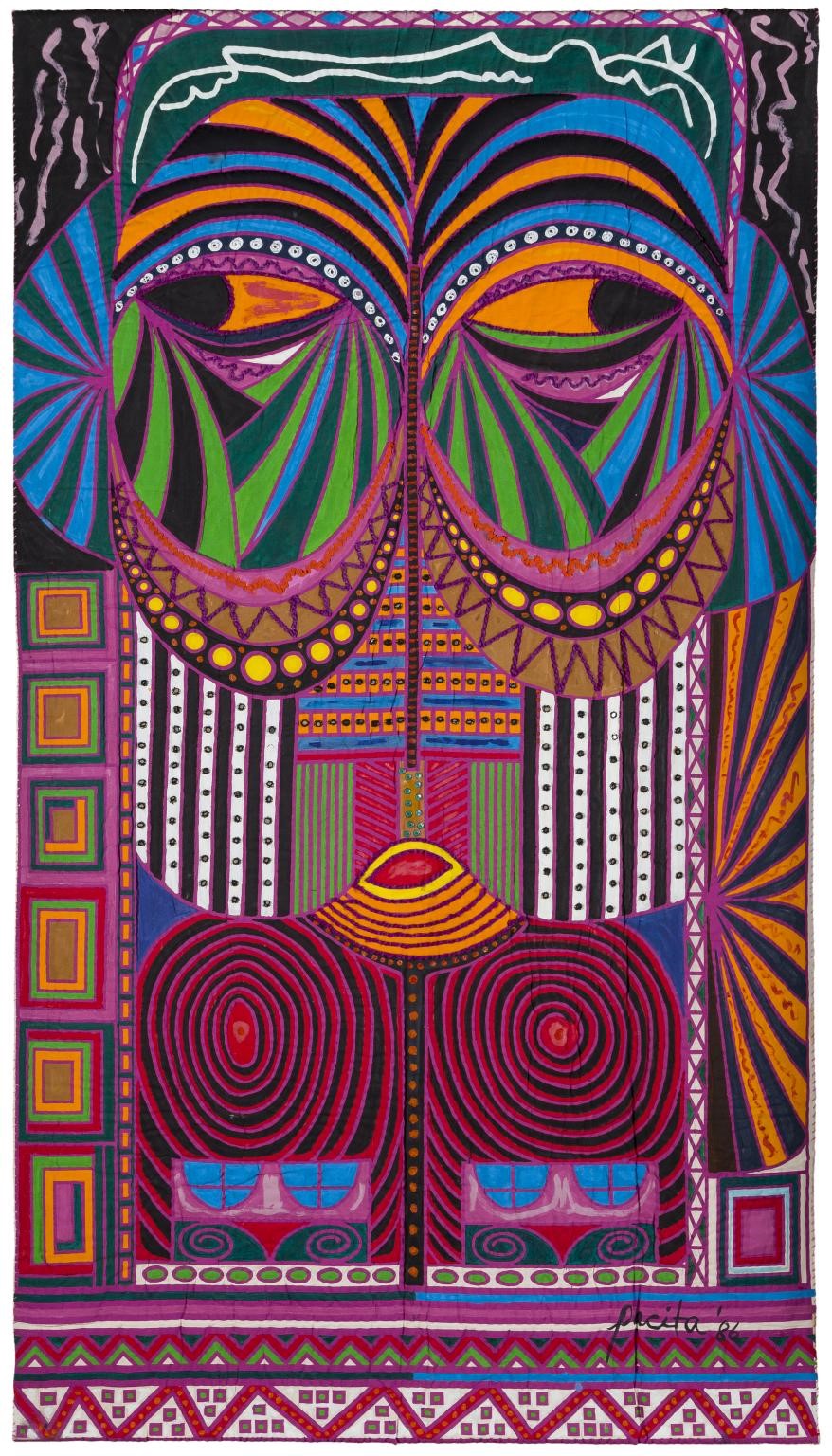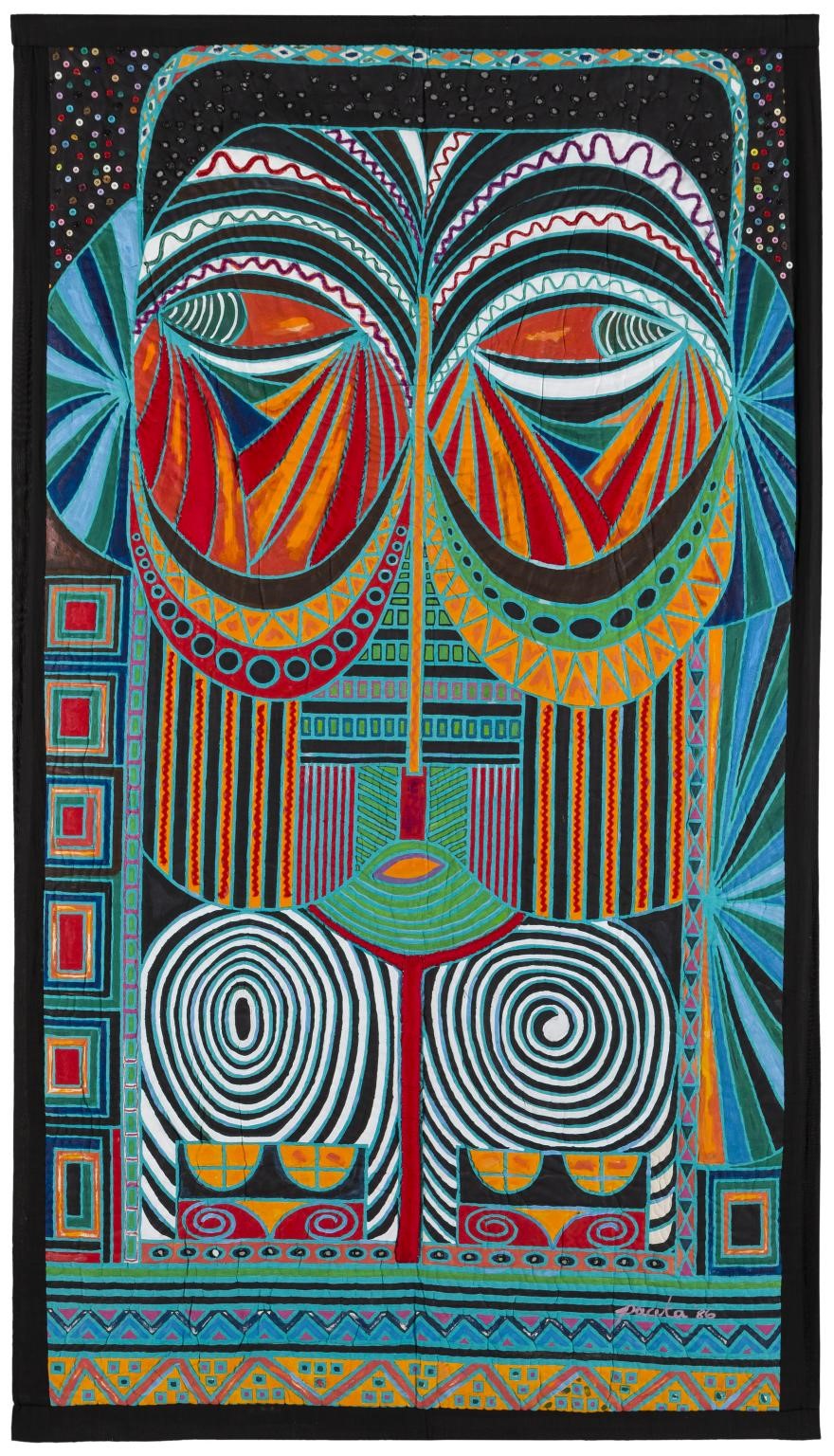09 September 2019 LONDON—Tate Modern, the United Kingdom’s foremost modern and contemporary art museum, recently acquired three works by Ivatan artist Pacita Abad. Tate Modern has one of the most extensive and diverse collections of artwork from all over the world and is one of the world’s most important contemporary art galleries. European Mask (1990), Bacongo III (1986), and Bacongo IV (1986) joined the gallery’s collection this year with funds provided by Tate’s Asia Pacific Acquisitions Committee.
“Pacita Abad’s works currently join a prestigious roster of artworks in Tate Modern,” said Ambassador Antonio M. Lagdameo. “This is truly an affirmation that Philippine art is an important part of the international artistic canon.”
According to the gallery, “Two of the embroidered tapestries in Tate’s collection are from a series entitled Bacongo, referring to the Bantu ethnic group in Central Africa. The third, European Mask, speaks to Abad’s reversal of the co-opting of so-called primitive art by Western artists within the history of modern art.”
Abad’s European Mask was among the artworks featured in the Metro Center Mural: Six Masks from Six Continents in Washington D.C. from 1990-1993. The same artwork was part of the artist’s solo exhibition at the Museum of Contemporary Art and Design in Manila in 2018. The other two artworks in the series entitled Bacongo, refer to the Bantu ethnic group in Central Africa.
Abad is considered one of the most important contemporary artists in the Philippines. She is best known for her vibrant use of colours and for her extensive use of trapunto, a kind of quilting technique that lends a multidimensional effect on her artwork.
Abad travelled extensively in her lifetime and her artwork reflected the cultural traditions of the many place that resonated with her. Apart from the Philippines, she travelled and soaked in the diverse cultural influences of countries such as Bangladesh, Indonesia, Korea, Mexico, Papua New Guinea, and several countries across Africa.
Her travels opened her eyes to the various social and political realities around the world. As a response, she sought to harness the power of traditional and indigenous art forms to shed light on these issues.
“Abad’s aim in her work was to connect with the world through a vibrant formal language that integrated her interest in traditional art forms such as batik painting in Indonesia, ink-brush painting in Korea, tie-dye in Africa, and macramé in Papua New Guinea, all within a language of abstraction and figuration,” said writer Clara Kim in a write-up on Abad published by Tate Modern.
Abad created more than 4,000 artworks in her lifetime but she is best known for painting Singapore’s Alkaff Bridge, a masterpiece she completed shortly before her death in 2004. END

Pacita Abad
European Mask
1990
Acrylic paint, silkscreen, and thread on canvas
2607 mm x 1827 mm
Tate Modern
Photo by John P. Garrity

Pacita Abad
Bacongo III
1986
Acrylic paint, silkscreen, plastic buttons, mirrored glass, wool, ribbons, and thread on canvas
2630 mm x 1495 mm
Tate Modern
Photo by John P. Garrity

Pacita Abad
Bacongo IV
1986
Acrylic paint, silkscreen, plastic buttons, mirrored glass, wool, ribbons, thread, and textiles on canvas
2705 mm x 1548 mm
Tate Modern
Photo by John P. Garrity
